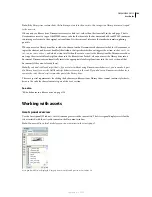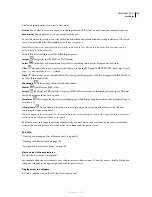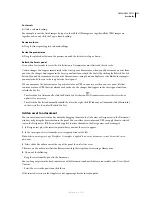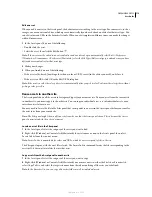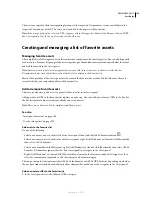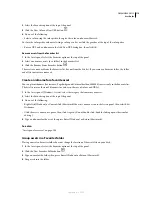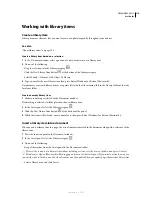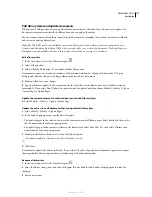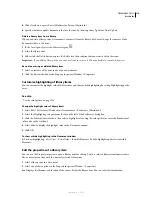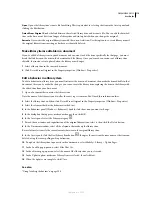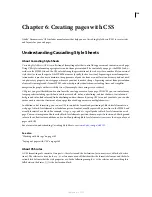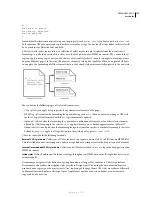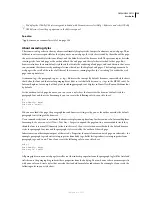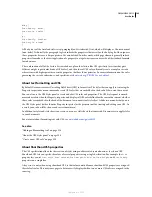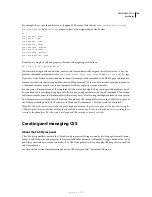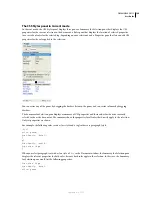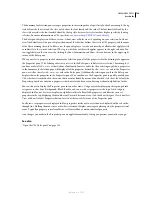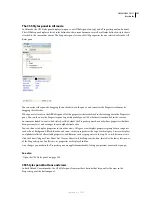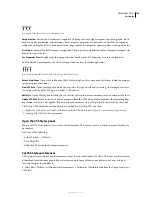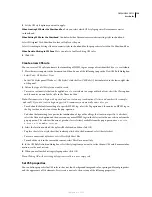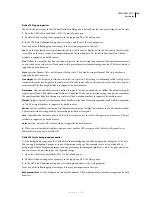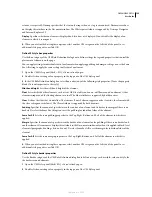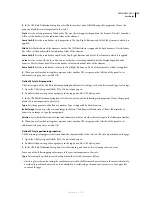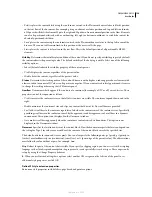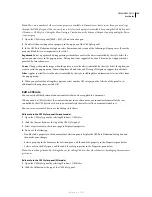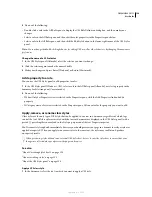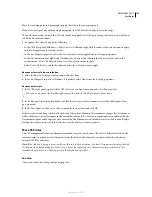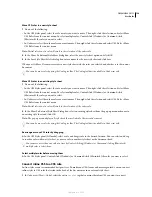
DREAMWEAVER CS3
User Guide
123
body {
font-family: Arial;
font-style: italic;
}
p {
font-family: Courier;
font-style: normal;
}
All body text will be Arial and italic
except
paragraph (and its inherited) text, which will display as Courier normal
(non-italic). Technically, the paragraph tag first inherits the properties that are set for the body tag, but then ignores
those properties because it has properties of its own defined. In other words, while page elements generally inherit
properties from above, the direct application of a property to a tag always causes an override of the standard formula
for inheritance.
The combination of all of the factors discussed above, plus other factors like CSS specificity (a system that gives
different weight to particular kinds of CSS rules), and the order of CSS rules, ultimately create a complex cascade
where items with higher priorities override properties that have lower priorities. For more information on the rules
governing the cascade, inheritance, and specificity, visit
www.w3.org/TR/CSS2/cascade.html
.
About text formatting and CSS
By default, Dreamweaver uses Cascading Style Sheets (CSS) to format text. The styles that you apply to text using the
Property inspector or menu commands create CSS rules that are embedded in the head of the current document.
You can also use the CSS Styles panel to create and edit CSS rules and properties. The CSS Styles panel is a much
more robust editor than the Property inspector, and displays all CSS rules defined for the current document, whether
those rules are embedded in the head of the document or in an external style sheet. Adobe recommends that you use
the CSS Styles panel (rather than the Property inspector) as the primary tool for creating and editing your CSS. As
a result, your code will be cleaner and easier to maintain.
In addition to styles and style sheets you create, you can use style sheets that come with Dreamweaver to apply styles
to your documents.
For a tutorial about formatting text with CSS, see
www.adobe.com/go/vid0153
.
See also
“Adding and formatting text” on page 226
“About the CSS Styles panel” on page 124
“Create a new CSS rule” on page 129
About Shorthand CSS properties
The CSS specification allows for the creation of styles using an abbreviated syntax known as
shorthand CSS
.
Shorthand CSS lets you specify the values of several properties using a single declaration. For example, the
font
property lets you set
font-style
,
font-variant
,
font-weight
,
font-size
,
line-height
, and
font-family
properties on a single line.
A key issue to note when using shorthand CSS, is that values omitted from a shorthand CSS property are assigned
their default value. This may cause pages to be incorrectly displayed when two or more CSS rules are assigned to the
same tag.
September 4, 2007

